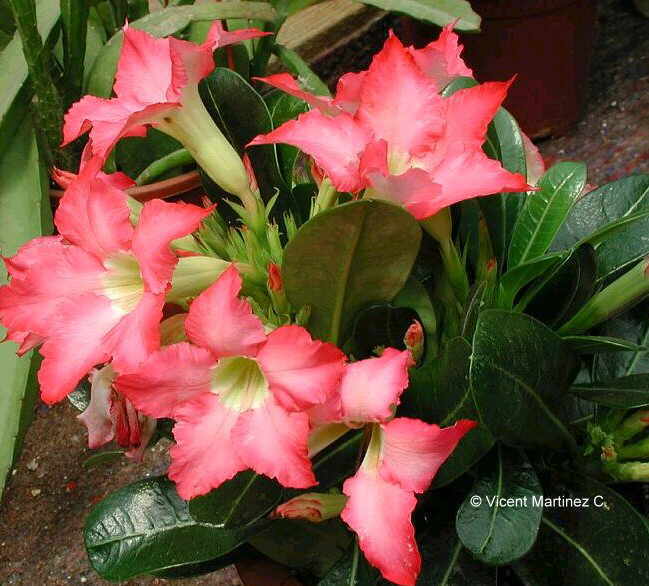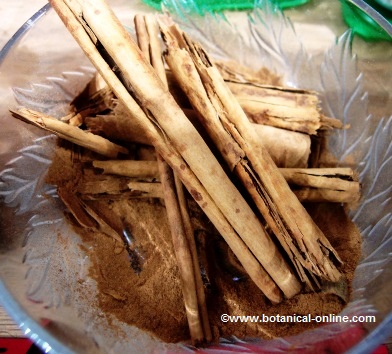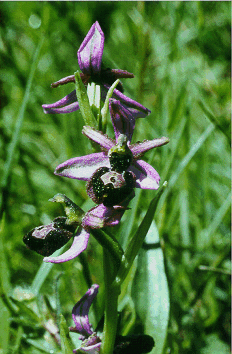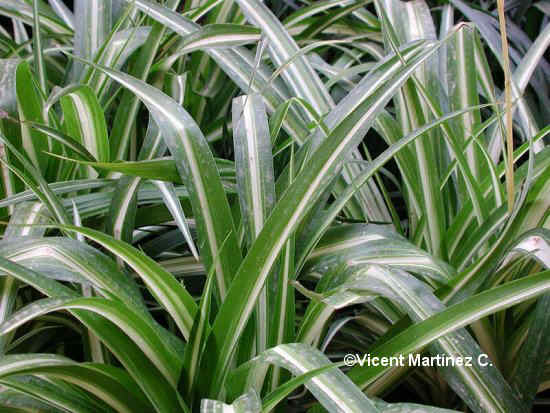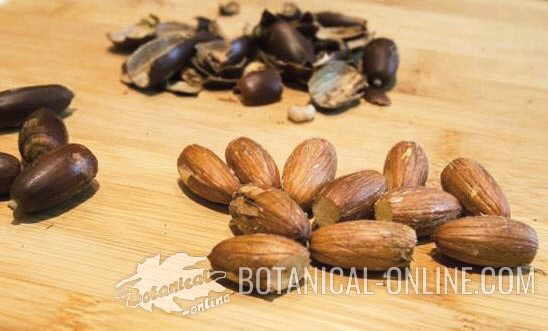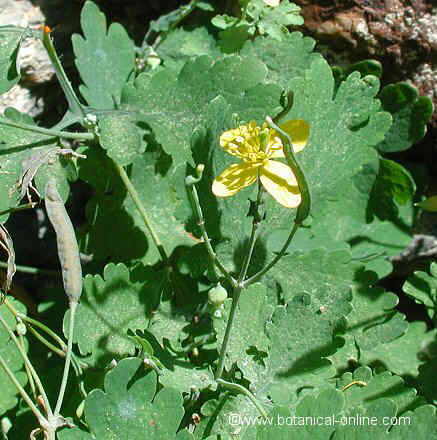Contents
Dangers of common rue
CHARACTERISTICS OF COMMON RUE
What is common rue?
Common rue (Ruta graveolens L.) is an aromatic woody perennial plant of the Rutaceae family.
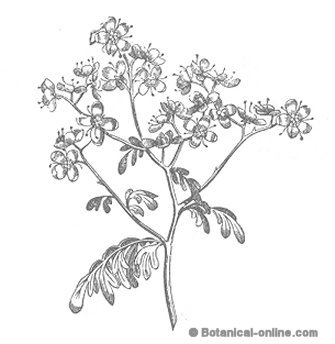 Drawing of common rue
Drawing of common rue
What is common rue like?
It can measure up to 150 cm. high. Stems erect, branched. yellowish-green
Fleshy leaves very divided, equipped with glands that give it its distinctive odor.
Flowers up to 2 cm with slightly serrated petals. Fruit in capsule.
It can be found in the Mediterranean drylands, next to slopes and walls. It is sometimes grown as a garden plant, so, it can be found near homes.
Formerly it was used in the kitchen, planted in orchards or fields so it can appear naturalized in some wastelands or abandoned fields.
Active components of common rue
– Essential oil rich in acid (anisic, caprylic and salicylic) terpenes (limonene, pinene and cineol), 2- undecanone (vermifuge), methyl nonyl ketone, methylnonyl-carbinol
– Alkaloids: arborinin, graveolin, graveolinin, skimmianine, dictamnine, cytisine or sophorin, cocusaginine, etc.
– Tannins
– Coumarins, especially furocoumarins, such as bergapten
– Rutin (venotonic action)
– Active parts: Mainly essential oil, although, in smaller quantities, throughout the plant.
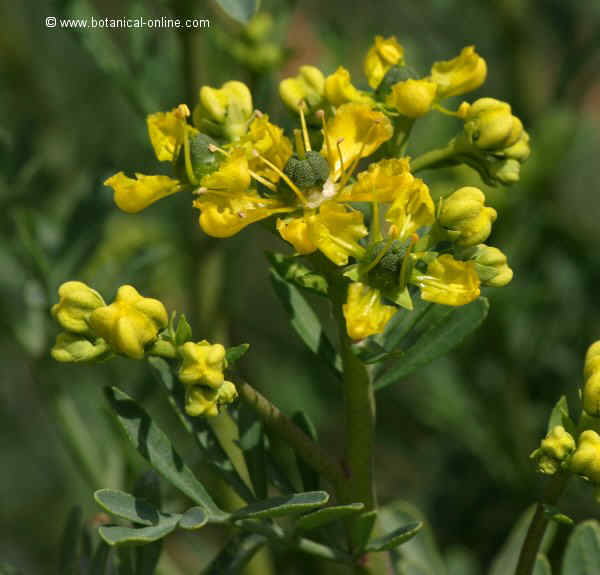
Common rue flowers
Uses of rue
– Medicinal: Common rue has been medicinally used for certain diseases of the circulatory system and for digestive problems. Its contribution as emmenagogue and abortifacient is widespread.
* More information: Rue Contraindications
– Food industry: This plant appears in the preparations of the food industry t to flavor food. It is a common ingredient in many liquors.
Given the toxicity of its components its use is discouraged in homemade preparations. Its use is restricted to qualified personnel and under medical supervision.
In addition to NOT beeing used by pregnant women, it should never be given to infants.
TOXICITY OF COMMON RUDE
Rue toxicity is extreme in high doses
Besides having a depressant effect on the central system, it acts on the digestive tract causing irritation to intestinal and oropharyngeal mucosa, kidneys and liver.
Symptoms of external poisoning with common rue:
– Skin lesions caused by the phototoxic properties furocoumarines (dermatitis or blisters on the skin, skinspots, itching and even fever.)
– In external use, rich in toxic compounds, essential oil of rue can damage the skin, causing dermatitis or even blisters.
Symptoms of internal poisoning with common rue:
– Besides the external described symptoms, the ingestion of products made from this plant, when it exceeds the permitted levels, is manifested in stomach pain, nausea, vomiting, diarrhea, headaches.
– In strong intoxications, cardiorespiratory arrest and death.
How can poisoning with common rue be treated?
The treatment consists on gastric lavage, artificial breathing, breathing stimulants. Seeking medical advice immediately is necessary.
![]() More information on common rue.
More information on common rue.

